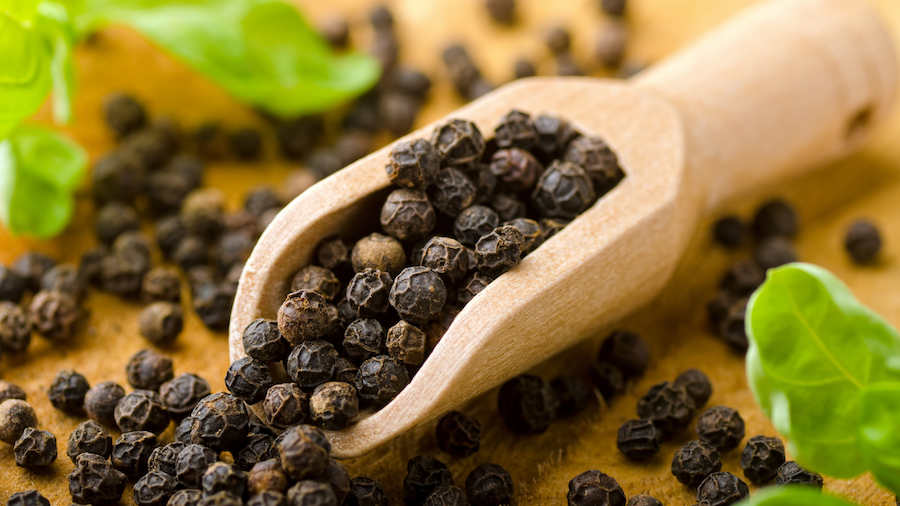It would be inauthentic to act like the “high” offered by cannabis products isn’t a significant reason most enthusiasts partake in them.
That buzz, the inebriating effect, is an undeniably enjoyable component of the cannabis experience.
However, there are two factors to consider that go beyond the giggles, munchies, or other stereotypes:
- The “high” you feel from cannabis can be richly therapeutic, bolstering your quality of life if you implement it insightfully.
- Cannabis has many components outside of its psychoactive effects, including various healing, aromatic, and flavor-related characteristics.
Focusing more on number two, we’ll point out how enjoying cannabis shares traits with indulging in alcoholic beverages like wine, whiskey, or beer. Namely, the experiences go beyond the related mind-altering effects.
There are nuances in each cannabis strain. Like wine has tannins, bouquets, and layered flavors, cannabis strains have terpenes.
Terpenes lend cannabis strains their aromatic profiles. They’re also prevalent in the entourage effect, enhancing the overall cannabis experience.
Caryophyllene is a terpene featured prominently in many strains, and we’ll examine it in-depth below.

What Is Caryophyllene?
There’s plenty to say about caryophyllene, as it’s a heavyweight terpene in many ways.
Unlike other terpenes, caryophyllene can mirror cannabinoids and, thus, can trigger reactions in our cannabinoid receptors, yielding many effects and benefits.
Caryophyllene is a relatively enormous molecule, vastly trumping most other terpenes (including limonene and myrcene) in size. The cyclobutane ring found in caryophyllene’s molecular structure is a rarity; other terpenes don’t carry it [1].
A peppery, spicy scent is what caryophyllene is most known for—it’s the same one that’s present in black peppercorns [2].
As the essential oil in cannabis sativa [3], caryophyllene also has a strong presence in rosemary, copaiba, cloves, and hops. [4].
Caryophyllene Benefits Effects And Its Role In Cannabis
The endocannabinoid system (ECS) is crucial to our body makeup, and its optimal functionality promotes overall health and wellness.
Specifically, the ECS encapsulates a widespread biochemical receptor network, with the CB1 and CB2 being the main ones. The brain and central nervous system typically house CB1 receptors, while our peripheral organs host CB2 receptors.
CB1 receptors bind with ingested cannabinoids (e.g., THC) in the brain and central nervous system, triggering a euphoric response.
How does caryophyllene come into play? As we said earlier, it can mirror cannabinoids—a differentiating factor from other terpenes.
One advantage this offers is the ability to neutralize the more discomforting, overly visceral effects of a given cannabis strain. Caryophyllene binds with CB2 receptors to yield this more relaxing experience after you ingest cannabis [5].
Additionally, caryophyllene makes its way into the peripheral organ ECS since it can attach to the CB2 receptors. It won’t necessarily add to the overall euphoria of a high. Still, it can provide anti-inflammatory benefits to the surrounding organs [1].
When you combine these benefits, they tend to contribute to a heightened overall experience with cannabis products.
Sure, caryophyllene is not directly impacting your “high.”
Nonetheless, it enhances the entourage effect, involving all of a given strain’s components to take your cannabis experience to the next level. It goes beyond one cannabinoid and maximizes all elements of a bud.
Caryophyllene’s Therapeutic Benefits
It’s challenging to know where to begin with caryophyllene’s multitude of potential therapeutic benefits. First, it’s important to note how you should speak with a licensed healthcare professional before self-medicating with any type of cannabis.
We’ll start by speaking to one study citing caryophyllenes analgesic-related benefits on mouse models, helping relieve neuropathic inflammation and pain [6].
Furthermore, other sources refer to beta-caryophyllene’s anti-inflammatory traits that help mitigate the symptoms of numerous conditions, such as interstitial cystitis. The driving factor in this therapeutic response is caryophyllene triggering CB2 receptor activation in the ECS [7].
Other studies suggest beta-caryophyllene might help with chronic stress-related biochemical and behavioral shifts. Results from research have shown positive progress in beta-caryophyllene helping offset stress-induced depression and other mental illness symptoms [8].
Some experts believe caryophyllene can help combat gut inflammation and optimize digestive health, potentially possessing gastroprotective properties.
Once more, we’ll reiterate the value of speaking with a healthcare professional if you wish to implement caryophyllene-rich cannabis strains into your life for therapeutic purposes. We’re an adult-use recreational dispensary at Phasal and can’t offer you any medical advice.
Strains With Caryophyllene
Select’s Slurricane Elite Live Cartridge is something we carry at Phasal, and it features beta-caryophyllene. This high-quality oil is infused with live resin terpenes, freshly harvested for your enjoyment, and focused on providing you with sleepy, happy, and relaxed effects.
Our Grassroots Funky Charms Flower is a potent hybrid with nutty chocolate undertones and delicious fruity flavors. This strain offers a balanced, chilled-out, but energetic effect, brimming with beta-caryophyllene and caryophyllene oxide. The latter boasts antifungal and cancer-fighting properties.
Lastly, Grassroots also has the Donny Burger Flower, another hybrid balancing a laid-back high with a helpful zest of energy, featuring beta-caryophyllene and caryophyllene oxide.
Caryophyllene’s Role In Aromatherapy
Caryophyllene is primarily a sesquiterpene in essential oils due to its rare cyclobutane ring, which fosters a unique role in aromatherapy.
The cleansing and soothing traits present in caryophyllene make it an ideal aromatherapeutic component and a welcome ingredient in topicals [9].
Caryophyllene-heavy strains are suitable for recreational adult users who struggle with feeling jittery after partaking in cannabis consumption.
Those suffering from stress and inflammatory symptoms might consider discussing caryophyllene-based cannabis products with a medical practitioner to see if they could help you.
However, you want to be sure the cannabis products you purchase contain caryophyllene—a notion you can’t always take for granted. We’ll examine how to navigate this issue in the next section.
How To Tell If Caryopyllene Is Present In Cannabis
The cannabis you purchase from a dispensary should be lab-tested and, thus, have a label on the packaging detailing terpene content.
Some cannabis doesn’t have readily available information. In this instance, you can detect caryophyllene through its diesel scent. It should trigger a tickling effect on your nose, causing an urge to sneeze because of the spicy and woodsiness of the odor.
Shopping with reliable dispensaries like Phasal will also help you search for specific terpenes. We ensure such details are transparently labeled because of our commitment to informing our customers about what they’re putting into their bodies.
Precautions And Considerations
Once exposed to the air, caryophyllene can form allergenic products [10].
Remember a few of these basic approaches to consuming cannabis with caryophyllene:
- Moderation is king. Start low with does and build up incrementally, investigating your responses.
- Avoid overly frequent cannabis usage. If you believe continual cannabis consumption may help you, speak with your doctor about it.
- Talk with your healthcare provider before using cannabis for any therapeutic need. Your well-being shouldn’t be a guessing game.
Final Thoughts
Caryophyllene’s ability to bind to our ECS by emulating cannabinoids is a rare distinction amongst terpenes, providing calming and anti-inflammatory benefits.
It’s impossible to say what’s to come for caryophyllene—and the cannabis strains containing it—since research is only in its infancy. As cannabis becomes more mainstream, terpenes like caryophyllene will likely be better harnessed for health benefits.
Comment in the discussion section below to add thoughts or ask questions about caryophyllene. Or peruse our menu for products rich in caryophyllene.
Sources
- https://www.leafly.ca/news/science-tech/caryophyllene-terpene
- https://thcdesign.com/blog/caryophyllene-terpene/
- https://en.wikipedia.org/wiki/Caryophyllene#:~:text=Caryophyllene%20(%2F%CB%8Ck%C3%A6ri,copaiba%2C%20rosemary%2C%20and%20hops.
- https://www.sciencedirect.com/topics/medicine-and-dentistry/caryophyllene#:~:text=%CE%B2%2DCaryophyllene%20is%20the%20primary,rosemary%2C%20copaiba%2C%20and%20cannabis
- https://www.happyvalley.org/resources/cannabis-terpenes-and-the-entourage-effect/#:~:text=Some%20terpenes%20like%20limonene%20and,unwanted%20side%20effects%20of%20cannabis
- https://www.sciencedirect.com/science/article/pii/S0924977X13003027
- https://www.mdpi.com/1420-3049/28/10/4144#:~:text=Beta%2Dcaryophyllene%20has%20demonstrated%20anti,the%20cannabinoid%20type%202%20receptor
- https://pubmed.ncbi.nlm.nih.gov/31862467/
- https://www.essentialoil.com/blogs/news/caryophyllene-terpene-highlight#:~:text=Caryophyllene%20has%20a%20unique%20molecular,of%20aromatherapy%20and%20topical%20applications.
- https://pubmed.ncbi.nlm.nih.gov/15932583/#:~:text=Previous%20studies%20have%20shown%20that,allergenic%20products%20on%20air%2Dexposure
